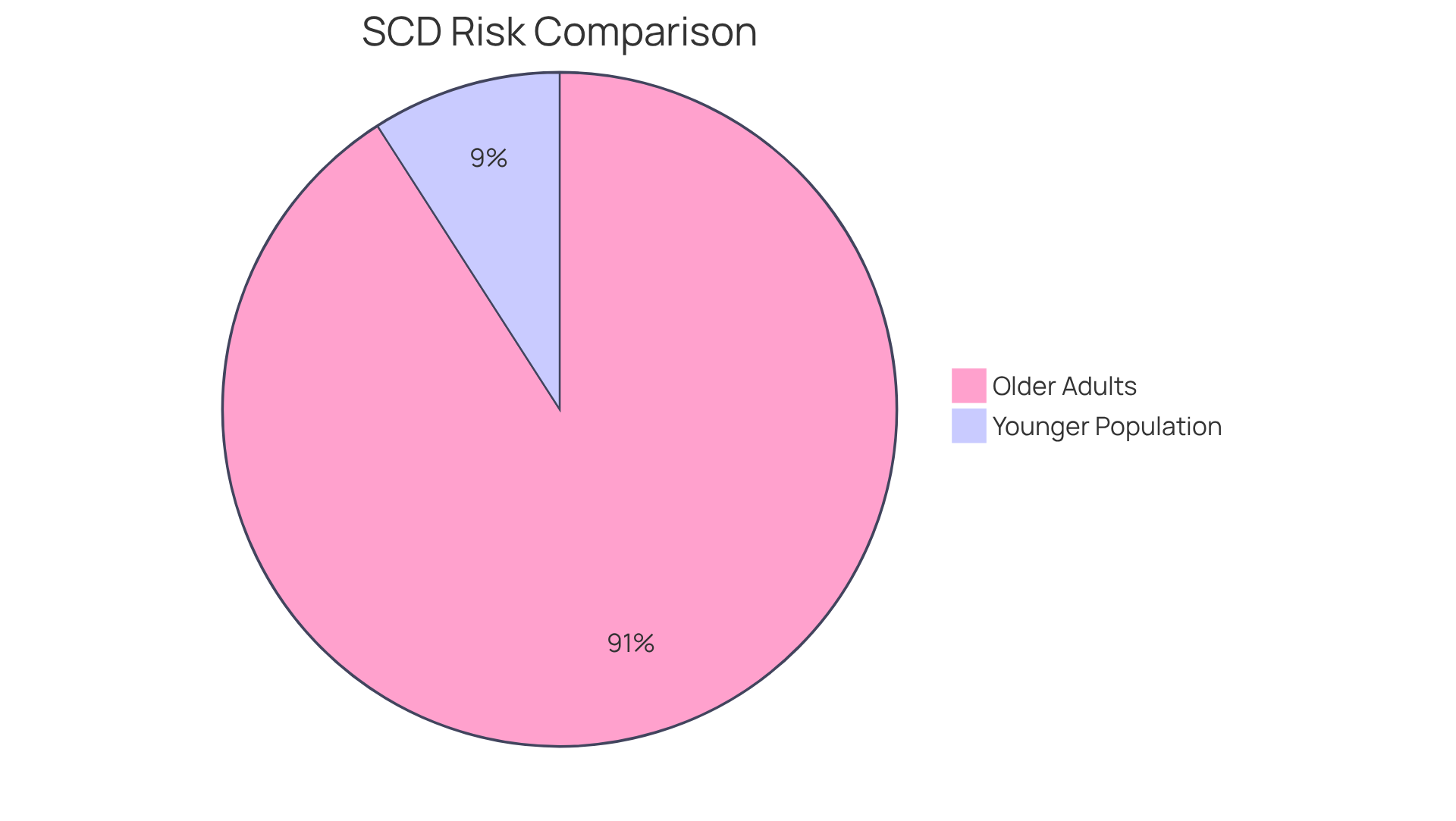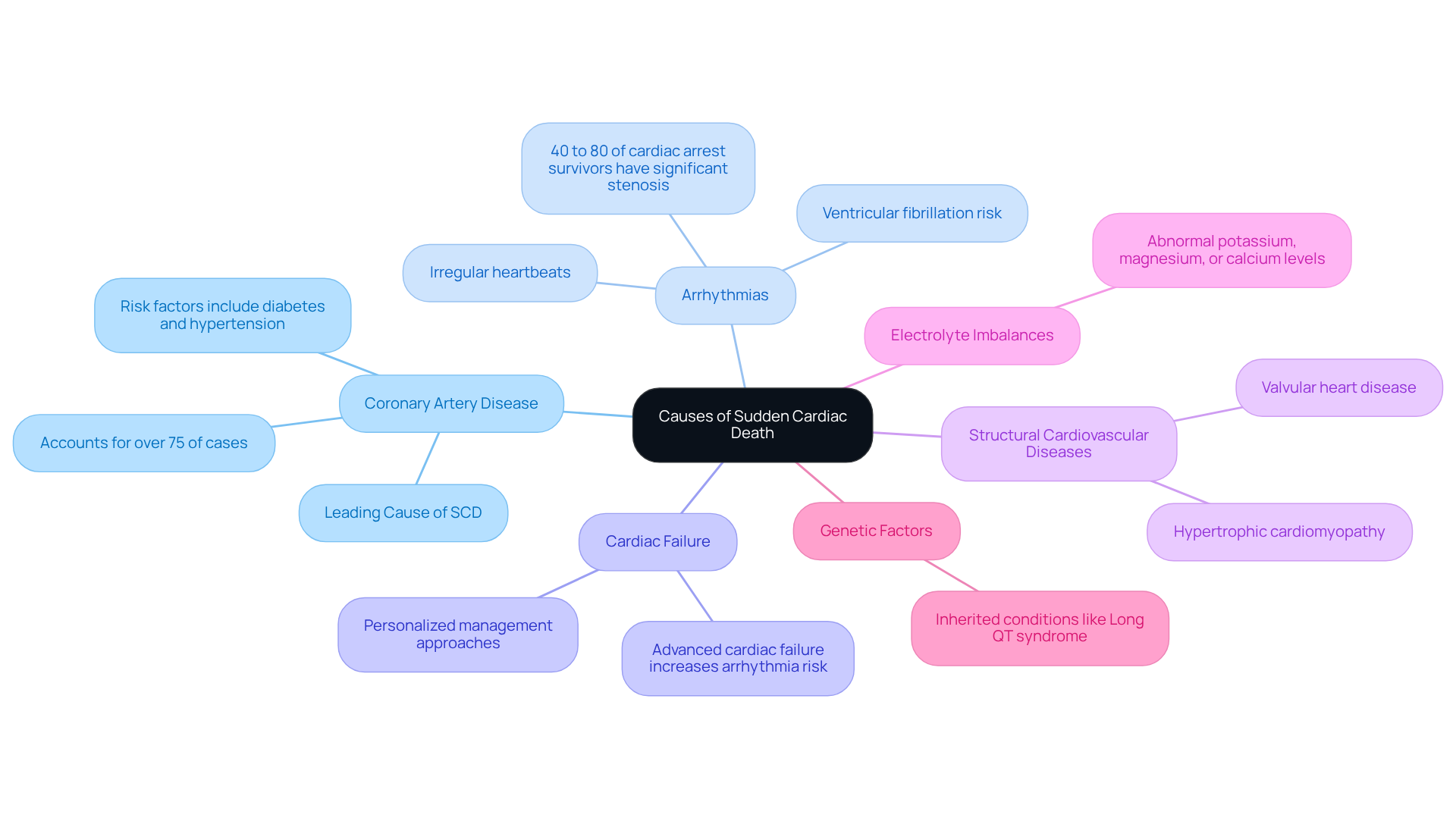


Sudden cardiac death (SCD) is a serious concern, primarily stemming from underlying heart conditions like coronary artery disease, arrhythmias, and cardiac failure. Seniors, in particular, face heightened vulnerability due to various risk factors. It's essential to recognize these challenges and understand that awareness and education play crucial roles in addressing them.
In addition to this, proactive management strategies can make a significant difference. Regular health screenings and lifestyle changes can help reduce the incidence of SCD in older adults. By taking these steps, we can foster a healthier future together.
Remember, you are not alone in this journey. Seeking support and guidance can empower you to take control of your heart health, ensuring that you live a fulfilling life. Your well-being is important, and there are resources available to help you navigate these concerns with confidence and care.
Sudden cardiac death (SCD) represents a serious concern, especially for our older adults, whose lives can be profoundly affected by its unexpected nature. This risk can bring about significant emotional distress for families and communities. As age increases, the statistics reveal a troubling rise in risk, making it essential for seniors and their caregivers to understand the underlying causes and explore preventive measures.
What strategies can we implement to help reduce this risk?
How can increasing awareness reshape our approach to heart health in this vulnerable population?
Together, we can navigate these concerns with compassion and support.
Sudden cardiac death is a heartbreaking reality that can strike unexpectedly, often within an hour of the first symptoms. This tragic event is a significant public health concern, especially for our older adults, where it represents a large portion of deaths related to cardiovascular issues. The effects of SCD ripple through families and communities, leaving lasting impacts. Understanding —its sudden onset and often unnoticed warning signs—is crucial for recognizing the factors at play and implementing effective preventive strategies.
Research shows that sudden cardiac death is often linked to underlying heart conditions, highlighting the importance of raising awareness and providing education to those at risk, particularly seniors who may face multiple health challenges. Have you or a loved one experienced heart health concerns? Statistics reveal that the risk of SCD increases significantly with age, from about 1-2 per 100,000 individuals in younger populations to approximately 1-2 per 1,000 in older adults. This stark contrast underscores the urgent need for targeted interventions and community awareness initiatives to help alleviate the challenges posed by sudden cardiac death in this vulnerable group.
Together, we can foster a supportive environment that encourages open discussions about heart health. If you or someone you care about is experiencing symptoms or has concerns, please don't hesitate to reach out for support. You are not alone in this journey, and there are resources available to help navigate these challenges.

The causes of sudden cardiac death can be complex, especially for older adults. Understanding these factors is essential for seniors and their caregivers, as it empowers them to and seek timely medical intervention. Here are some key contributors:
As the occurrence of sudden cardiac death increases with age, awareness and proactive management of these contributing factors through programs like CardioElite™ can greatly enhance outcomes. Real-world case studies illustrate how Amavita's comprehensive care has positively impacted patients, reinforcing the importance of targeted cardiovascular care. If you have concerns about your heart health, we encourage you to reach out for support—your well-being is our priority.

Avoiding unexpected heart failure involves a compassionate approach that blends lifestyle changes, medical supervision, and an understanding of contributing factors. Here are some key strategies to consider:
By implementing these strategies, seniors can significantly lower their risk of sudden cardiac death while enhancing their overall cardiovascular health. With the available at Amavita Heart and Vascular Health, you can feel confident in taking control of your heart health journey. Remember, you are not alone—support is always within reach.

Sudden cardiac death (SCD) poses a critical threat, particularly to our cherished seniors, as it can arise unexpectedly and often without warning. Understanding this phenomenon is vital for recognizing risk factors and implementing effective prevention strategies. By fostering awareness and education, families and communities can better support older adults in managing their heart health, ultimately reducing the incidence of this tragic event.
This article highlights several key contributors to sudden cardiac death, including:
It emphasizes the importance of proactive health management through regular screenings, medication adherence, and lifestyle modifications. By adopting heart-healthy practices and remaining vigilant about symptoms, seniors can significantly mitigate their risk of SCD, enhancing their overall well-being.
In light of the alarming statistics surrounding sudden cardiac death in older adults, it is imperative for individuals, caregivers, and healthcare providers to prioritize heart health. Engaging in open conversations about cardiovascular risks and seeking timely medical interventions can make a profound difference. Embracing a comprehensive approach to prevention not only empowers seniors but also strengthens the fabric of our communities, ensuring that no one faces the threat of sudden cardiac death alone.
What is sudden cardiac death (SCD)?
Sudden cardiac death is an unexpected event that can occur within an hour of the first symptoms, representing a significant public health concern, particularly among older adults.
Why is sudden cardiac death a significant issue?
SCD is a major contributor to deaths related to cardiovascular issues, especially in older adults, and its effects extend to families and communities, creating lasting impacts.
What are the common underlying causes of sudden cardiac death?
Sudden cardiac death is often linked to underlying heart conditions, which highlights the importance of awareness and education for those at risk, especially seniors.
How does age affect the risk of sudden cardiac death?
The risk of SCD increases significantly with age, from about 1-2 per 100,000 individuals in younger populations to approximately 1-2 per 1,000 in older adults.
What can be done to prevent sudden cardiac death?
Raising awareness, providing education, and implementing targeted interventions and community awareness initiatives are crucial for preventing SCD, particularly in vulnerable populations like older adults.
What should individuals do if they experience heart health concerns?
Individuals experiencing symptoms or having concerns about heart health should reach out for support, as there are resources available to help navigate these challenges.